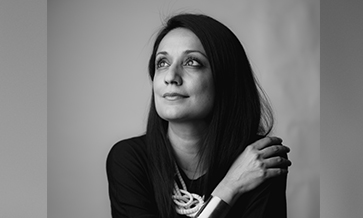Ally Martin, Global Brand Ambassador for Hendrick’s Gin, was in India recently to promote the company’s latest brand, Flora Adora. He spoke with Roy Thomas on what makes the brand stand out and why he felt the latest offering would be a hit among Indian consumers. Excerpts:
Hendrick’s gin is an established brand. What exactly is new this year?
Gin as a category is growing so much in India; everyone’s incredibly excited and incredibly engaged in the category. As an established brand, that gives us a great opportunity to make sure that as many people as we possibly can manage try us.
We have a new range called the ‘Cabinet of Curiosities’. It is our way of releasing a new expression of Hendrick’s gin every year. We try something completely different. We take that original liquid and then we add some new botanicals to it and release those into markets.
Earlier this year in India, we released Hendrix Neptunia, which was inspired by the magic of the sea. And so, to Hendrick’s Gin with its signature foundation of rose and cucumber, we added a wave of flavour from an invigorating blend of sea kelp (weed), coastal thyme and lime to create this sea-inspired fresh citrus-focused gin.
I’m also here in advance of a new launch in a few weeks called Hendrick’s Flora Adora, which will be third brand available in India.
Flora Adora is inspired by wild flowers, such as rose petals, hibiscus and lavender, which give the gin a unique and fragrant taste profile, which is also found in the garden of our Gin Palace where we make our gin in the distillery. Here they take the flowers, which bees and butterflies and insects are attracted to, and it tastes amazing. You’ll love it!
There's a boom in domestic gin brands. What differentiates you from the new craft gins?
We use a very unique production process. We use two different types of stills that are very rare, which allows us to create a unique blend of flavours. By using a copper pot still, which is very traditional, we create this deep, rich, complex flavour.
Then we have this incredibly rare Carter-head still that creates a light, fresh, fragrant spirit flavour. And we blend those together. It’s very hard to do this if you just use one still. So in terms of flavour profile, what we have is something which is much more complex.
On top of that, we use rose and cucumber in addition to those botanicals that we’ve already used. So that’s what allows us to stand out. The production levels are very complex and very interesting. That’s why we priced ourselves slightly higher.
We do everything in small batches and handcrafted still to this very day. It’s only made by three people in the Gin Palace, which I think is amazing because this is in spite of us being a large brand now.
You held some master classes here. What is the feedback you got from the bartenders?
We did some master classes last year. But we were in a couple of bars last night and everyone was very excited. They had some great and rich drinks on the menu –it is nice to see people doing innovative and exciting things with our liquid. It means they can try something different.
It’s also exciting for people who don’t know us. The key to the strategy is that it’s bringing in people; and they come back to us when they see that we’ve created something new and interesting.
Have you tried any Indian gin brands?
Yes! Short Story and Stranger and Sons. I tried some other stuff last year too. But I’ve also tried local Indian spirits like Feni. I’m a big fan of this drink! I think there are some delicious spirits being made in this country and generally some very interesting and good stuff and the quality of spirit production here is very high.
What is your strategy for India now? Is there something new?
We’re continuing with the tried and tested methods. The way we’ve grown the brand across all regions has been through building it first and foremost in the on-trade. So engaging with the right bars and engaging with more bartenders is on the cards.
In India, the off-trade is a huge focus because it’s primarily an off-trade market. We'll also focus quite strongly and heavily on traditional marketing communications, including digital and social media, and advertising as well.
I was a bartender by trade back in the day. I work very closely with the on-trade. So I always believed the best way to get consumers to really love your brand is if they go into a bar and a bartender tells them this is a great brand.
How do you find the standard of bartending in India?
We find the quality of the bars is very high. The standard of bartending is very high. Last year when I visited, there were some amazing bars in a lot of the cities I went to. Of course, in Delhi and Mumbai, but also in places like Jaipur and Goa.
The standard of drinks, the quality of drinks, and the creativity in drinks is as high as you’ll find anywhere else in the world. Some of the best parts of the world are here! And I think that’s something exciting.
What would be your ideal pairing of Indian food with your gin?
You know, the best one is Chicken 66. With gin and tonic, it’s the best! We love Indian food. So it’s never as good as it is here, but you know, we try.














